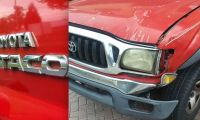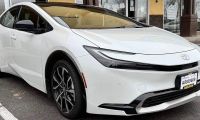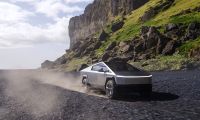The Incredible Efficiency of the Tesla Model 3 RWD With LFP Batteries
I've had my Model 3 RWD with LFP batteries for 5 days now. It has been a joy to drive and also to figure out how the energy and efficiency works. I'll go over that now.
Electric cars are different than gas cars in that you don't have an engine you pour fuel into a fuel tank for it to use. Instead, for my Tesla, there is a giant battery farm on the bottom of the car that acts as the power source. There's also a smaller secondary battery as well.
The energy used is on a part of the Tesla center console called "Energy". In this view, you can see the amount of Watt hours per mile your car is using and the expected range for the miles driven. In the case of this picture, mine is 327 miles of range, which is well above the 272 EPA range stated for the Model 3 RWD with LFP batteries. I also got a stunning 160 Watt hours per mile.
This drive of mine was for 30 miles and included some freeway driving, some city driving, and some parking lot driving. I went to my condo, to the gym, and to do a hike. All in all, I'm very pleased with the energy efficiency of this drive.
How to Gain Efficiency In Your Tesla
Here are the ways to get the most energy efficiency from your Tesla vehicle that I've picked up over the last 5 days.
First, look at the bar at the top left of the screen. It goes from green to the left and from red to the right based on how much energy you are using or gaining. When you let your foot off the accelerator, the car will slow down and regenerative brake automatically. This will put energy back into the battery. This will show a green bar on the left.
That's the first thing to master is always slowing down without using the brake and maximizing the regenerative braking. Learn to gauge when to let off the accelerator. At 30 miles per hour, you need less distance to completely slow down. When getting off the freeway, you'll need a little more "runway". Learn these distances and maximize them, while paying attention to other cars around you. A few times, I've still had to use the brake because I didn't judge the distance correctly.
Secondly, I don't run any air conditioning, even though it's the summer. I usually drive alone and I can handle the heat. I'm also thinking about tinting my windows though, to avoid the heat in the car, as well as rolling the windows down. Tinted windows will also help the Tesla from kicking off Overheating protection at 105 degrees Fahrenheit.
Third, avoid bursts of acceleration, even though they are very fun and you can impress people with them. Even in my Model 3 RWD, I can still get a nice burst of speed, but the energy consumption is much higher, at 600 Watt hours per mile or more during the burst of speed. Learn to accelerate and watch the bar on the center screen and try to have as small as a red bar on the right as you can.
In summary, learn to drive carefully, manage your acceleration, don't run the air conditioning if you can help it, and let regenerative braking slow you down instead of using the brake. Then use the energy screen to see how you are doing. That's it!
What do you think of this energy efficiency? Do you have a Tesla? Can you beat 160 Watt hours per mile over 30 miles?
Leave your comments below, share the article with friends and tweet it out to your followers.
Jeremy Johnson is a Tesla investor and supporter. He first invested in Tesla in 2017 after years of following Elon Musk and admiring his work ethic and intelligence. Since then, he's become a Tesla bull, covering anything about Tesla he can find, while also dabbling in other electric vehicle companies. Jeremy covers Tesla developments at Torque News. You can follow him on Twitter or LinkedIn to stay in touch and follow his Tesla news coverage on Torque News.












